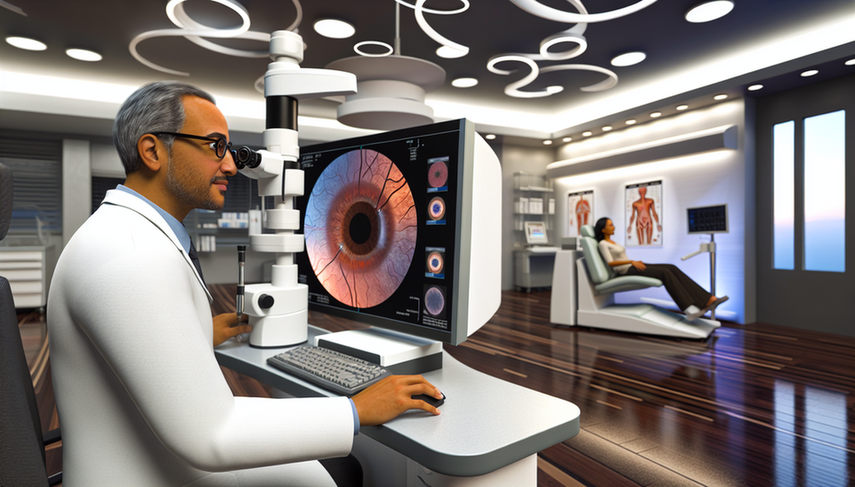Ophthalmic Imaging Analysis and AI: Advances in Teleophthalmology for Retinopathy Diagnosis

Teleophthalmology has emerged as a crucial tool in modern ophthalmic care, particularly in the diagnosis of diseases such as diabetic retinopathy. With advancements in technology, the integration of artificial intelligence (AI) in ophthalmic imaging analysis has significantly improved the accuracy and efficiency of detecting these pathologies. This article explores recent advances in teleophthalmology and the role of AI in retinopathy diagnosis, highlighting its impact on clinical practice.
Advances in Teleophthalmology and AI
Teleophthalmology has evolved significantly since its inception, facilitating access to ophthalmic care in remote areas and enhancing the geographical coverage of visual health services. The ability to capture and transmit high-quality images has been enhanced by the use of mobile devices and wide-field cameras, which have reduced the rates of ungradable images and increased the identification of diseases [1]. Furthermore, AI has proven to be a powerful tool in the automated detection of diabetic retinopathy, achieving sensitivity and specificity levels comparable to those of human specialists [2].
The use of deep learning algorithms has enabled the development of autonomous systems capable of interpreting retinal images with a high degree of autonomy. These systems not only enhance diagnostic accuracy but also reduce the workload of specialists, allowing for a hybrid approach where AI and human experts collaborate to optimize outcomes [3]. The implementation of these systems in teleophthalmology programs has proven to be cost-effective, especially in resource-limited countries [4].
Conclusions
The integration of AI in teleophthalmology represents a significant advancement in the diagnosis of retinopathy. These developments not only improve the accuracy and efficiency of diagnosis but also expand access to ophthalmic care, particularly in regions with a shortage of specialists. As technology continues to advance, it is crucial to address challenges such as data privacy and equity in implementation to maximize the potential of these innovations. Ongoing collaboration between clinicians, researchers, and technology developers will be essential to fully leverage these tools and enhance visual health globally.
Referencias
- [1] Diabetic retinopathy and ultrawide field imaging
- [2] Autonomous artificial intelligence versus teleophthalmology for diabetic retinopathy
- [3] AI-Human Hybrid Workflow Enhances Teleophthalmology for the Detection of Diabetic Retinopathy
- [4] The Role of Telemedicine, In-Home Testing and Artificial Intelligence to Alleviate an Increasingly Burdened Healthcare System: Diabetic Retinopathy
Created 23/1/2025
